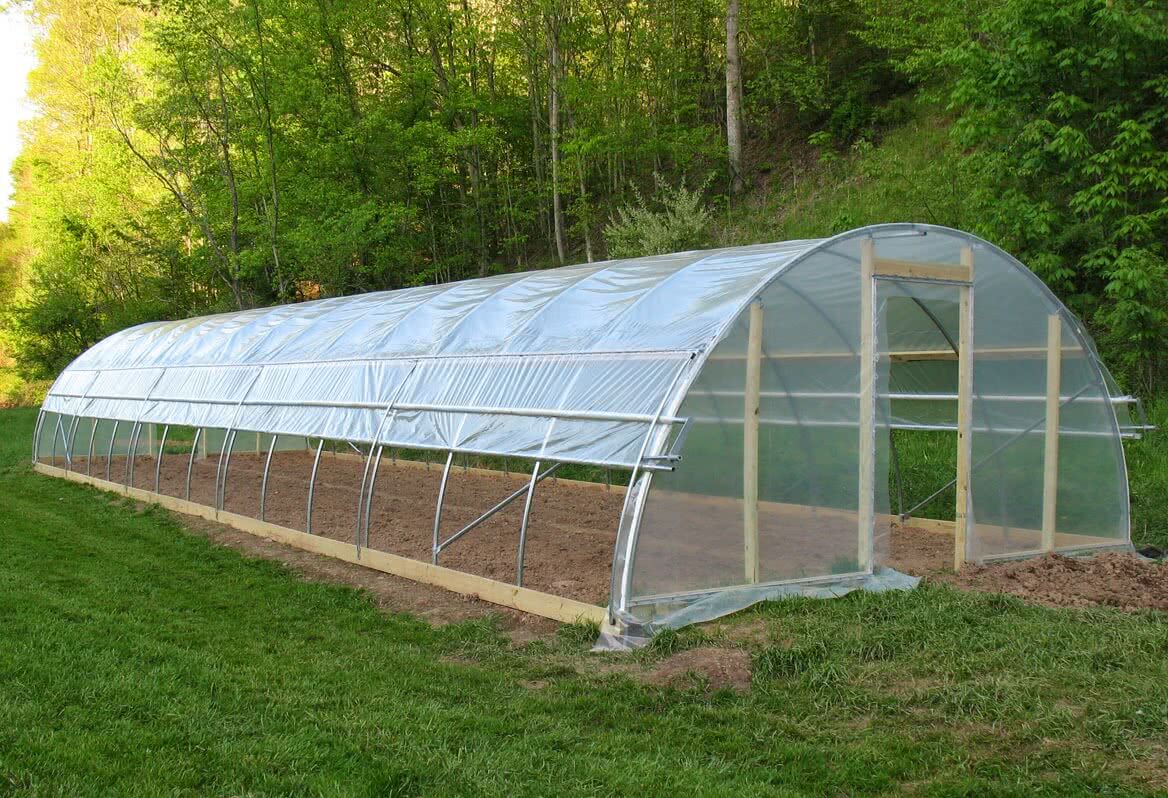What is Polyhouse?
Polyhouse is a type of greenhouse where specialized polythene sheet is used as a covering material under which the crops can be grown in partially or fully controlled climatic conditions.
Traditionally, the greenhouses were constructed on wooden frames where the glass was used as a cladding material. With the advancement of plastic technology, it became possible to replace the glass with plastic material. Polyhouses are more suitable for tropical and subtropical regions like India.
Modern-day polyhouses are built on G.I. steel frame and are covered with plastic, which is fixed on the frame with aluminum grippers. The white plastic film used for covering is of high quality; 200 microns thickness, with 3 years guarantee against degradation due to UV and weather. Mostly drip irrigation system is installed inside a polyhouse for watering purpose.
 Image Source: https://www.polyhouses.com[/caption]
Image Source: https://www.polyhouses.com[/caption]Following are different types of polyhouses:
- Saw tooth polyhouse
- Maxi-vent polyhouse
- Fan and pad polyhouse
- Poly-tunnel
Which crops can be grown in polyhouse?
- Floriculture crops: Cut flowers- Gerbera, Roses, Carnations, Orchids, Anthurium, Strelitzia, etc.
- Exotic vegetables: Colored capsicum, Cucumber, Cherry tomato, Zucchini, etc.
- Nursery plants: Ornamental indoor plants, Miniature foliaceous plants, Cacti and succulents, colorful exotic species.
 Image Source: http://www.agricafe.co.in[/caption]
Image Source: http://www.agricafe.co.in[/caption]Site selection for polyhouse construction:
- One requires a minimum of 1000 sq. mt. of the area to raise a commercially viable polyhouse. Availability of continuous source of quality water is essential.
- The site of construction should be higher than the surrounding land.
- The selected site should be pollution free.
- There should be a facility of good roads for transport of polyhouse produce to nearby markets.
 Image Source: https://4.imimg.com[/caption]
Image Source: https://4.imimg.com[/caption]Advantages of Polyhouse farming:
- Polyhouse protects the crops from wind, rain, radiation, precipitation and other climatic factors.
- It creates microclimate surrounding the crops that help in maximum growth regarding production and quality.
- Polyhouse also provides higher concentrations of Co2 to increase the production to maximum level; therefore Polyhouse yields are way higher than open field cultivation.
- You can grow the plants in polyhouse conditions that are otherwise impossible to cultivate in that particular climatic zone. Eg. Growing strawberry in plains of India.
- Polyhouse crops can give you maximum profit in a minimum area under cultivation.
- With a maximum level of automation, the number of manual activities, dependency on labor and overall labor cost is reduced.
 Image Source: http://agrifarming.in[/caption]
Image Source: http://agrifarming.in[/caption]Disadvantages of Polyhouse farming:
- Production cost is very high, and a significant amount of initial capital investment is required.
- Polyhouse cultivation is high maintenance farming and requires continuous vigilance.
- Technical knowledge is essential for running a polyhouse, and a skilled supervisor and trained labors are required to perform daily activities.
- Polyhouse farming is too much dependant on chemical fertilizers and pesticides, and still, there is less scope for organic agriculture.
 Image Source: http://agrifarming.in[/caption]
Image Source: http://agrifarming.in[/caption]Important points to be noted:
- The farmer gets many subsidies and technical assistance from the government of India, state government, Local Horticulture training centers, etc. regarding polyhouse farming.
- One has to prepare a crop specific ‘Project report’ of polyhouse farming before raising a polyhouse. This report should cover all the technical, financial and marketing aspects of the project.
- You can refer to model bankable projects from the agriculture department, agricultural banks and financial institutes like NABARD.
- The project report is essential to document in getting bank loans and subsidies.
- A thorough technical knowledge, financial analysis, and marketing survey should be done before going ahead with the project.
 Image Source: http://www.agrifarming.in[/caption]
Image Source: http://www.agrifarming.in[/caption] Lets Ugaoo!












